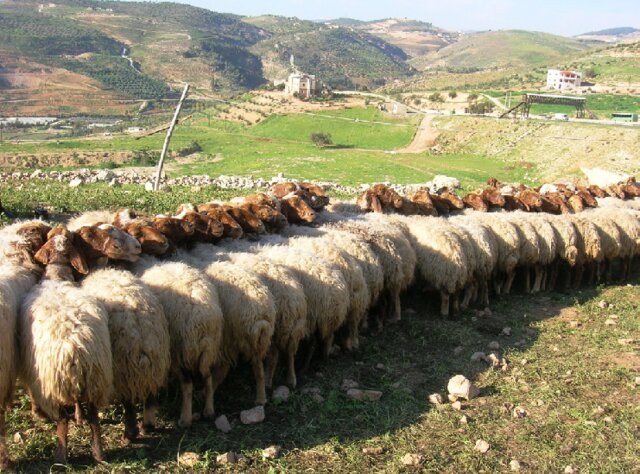
ANNOUNCEMENT
Optimizing Sheep and Goat Health: A Focus on Metabolic and Digestive Disorders

Optimizing Sheep and Goat Health: A Focus on Metabolic and Digestive Disorders
Maintaining optimal health in sheep and goat flocks is paramount for successful production. These ruminants are susceptible to various metabolic and digestive disorders, which can significantly impact productivity and profitability. This article provides a professional overview of common conditions affecting sheep and goats, offering practical strategies for prevention and management. This information is meant for advising purposes and should not be a substitute for professional veterinary consultation. Accurate diagnosis and treatment require a veterinarian’s expertise.
Parturient Paresis (Hypocalcemia/Milk Fever): Addressing the
Parturient paresis, also known as milk fever or hypocalcemia, is a periparturient metabolic disorder primarily affecting ewes and does, typically in late gestation or early lactation. It arises from a rapid decline in blood calcium levels due to the increased calcium demands of the developing fetus or milk production.
Proactive Prevention Strategies:
- Nutritional Management: Implement a well-balanced diet tailored to the specific needs of pregnant and lactating animals. Pay close attention to calcium, phosphorus, and vitamin D levels. Consult a qualified animal nutritionist or veterinarian to formulate appropriate rations.
- Strategic Mineral Supplementation: While mineral supplementation can be beneficial, it’s crucial to avoid imbalances. Work closely with your veterinarian to determine the correct type, dosage, and duration of supplementation. Over-supplementation can have adverse effects.
- Stress Mitigation: Minimize stress during late gestation by providing a stable environment, consistent routines, and minimizing handling or transport. Stress can exacerbate calcium mobilization issues.
Recognizing Clinical Signs: Be vigilant for early indicators such as restlessness, anorexia, muscle tremors, and incoordination. Prompt veterinary intervention is essential if the animal progresses to weakness, recumbency, or other neurological signs. Delayed treatment can lead to severe complications and even mortality.
Pregnancy Toxemia (Ketosis): Managing Energy Demands
Pregnancy toxemia, also known as ketosis, is a metabolic disorder that typically affects ewes carrying multiple fetuses in late pregnancy. It’s characterized by a negative energy balance, where the animal’s energy demands exceed its intake, leading to the breakdown of body fat and the accumulation of ketone bodies.
Prevention through Nutritional Precision:
- Energy Balance: Ensure adequate energy intake during late pregnancy to meet the demands of the growing fetuses. Increase the energy density of the diet gradually in the final weeks of gestation.
- Avoid Stressful Situations: Stressful events, such as sudden changes in feed, inclement weather, or transportation, can trigger pregnancy toxemia. Minimize these stressors whenever possible.
- Monitor Body Condition: Regularly assess the body condition score of pregnant ewes. Avoid excessive thinness or obesity, as both can increase the risk of pregnancy toxemia.
Clinical Presentation: Affected animals may exhibit decreased appetite, lethargy, neurological signs (e.g., incoordination, tremors), and recumbency. Veterinary diagnosis and treatment are crucial for managing this condition.
Rumen Acidosis: Maintaining Rumen Health
Rumen acidosis is a digestive disorder caused by the overconsumption of rapidly fermentable carbohydrates, leading to a drop in rumen pH. It can manifest in acute or subacute forms.
Acute Rumen Acidosis: This is a severe condition often associated with grain overload. It requires immediate veterinary attention.
Subacute Ruminal Acidosis (SARA): SARA is a more insidious problem, often linked to high-grain diets and insufficient fiber. It can lead to decreased feed intake, reduced milk production, and laminitis.
Preventative Measures:
- Gradual Dietary Transitions: Implement dietary changes gradually to allow the rumen microbiome to adapt.
- Fiber Adequacy: Ensure sufficient physically effective fiber in the diet to promote rumination and buffer rumen pH.
- Consistent Feeding Schedules: Avoid irregular feeding times and ensure adequate bunk space to prevent competition and overconsumption.
General Best Practices for Sheep and Goat Health:
- Regular Observation: Conduct routine observation of your flock for any signs of illness or abnormal behavior. Early detection is crucial for effective intervention.
- Biosecurity Protocols: Implement robust biosecurity measures to prevent the introduction and spread of infectious diseases.
- Vaccination and Parasite Control: Work with your veterinarian to develop a comprehensive vaccination and parasite control program tailored to your specific region and flock needs.
- Record Keeping: Maintain accurate records of animal health, treatments, and production data. This information is valuable for monitoring flock health and identifying potential problems.
By understanding these common disorders and implementing proactive management practices, sheep and goat producers can significantly improve flock health, productivity, and profitability. Close collaboration with a veterinarian is essential for developing tailored health management plans and addressing any health concerns promptly.






